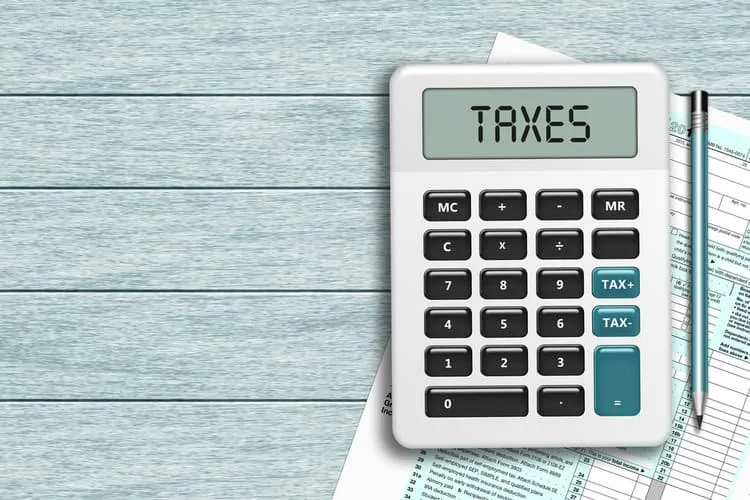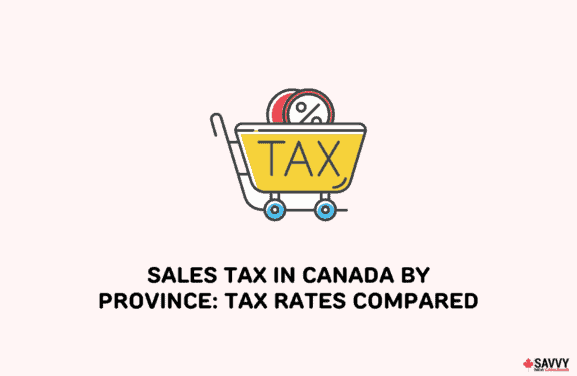Residents of Canada are expected to pay taxes on taxable income earned in the past year after factoring in all applicable tax deductions and credits.
If you live in Ontario, come April 30th, when you should have filed your tax return, you will pay income taxes based on Ontario’s tax brackets as well as income taxes based on the federal tax brackets for the previous tax year.
Canada’s taxation system is a “progressive” one, meaning that the more money you make, the more taxes you pay.
Tax rates vary depending on the type of income you are reporting, e.g. employment income, interest income, dividends, and capital gains. The fixed tax bracket amounts increase every year depending on the inflation rate.
The combined federal and provincial tax rate that applies to your taxable income is referred to as your marginal tax rate.
Both federal and provincial taxes are administered by the Canada Revenue Agency, except for Quebec, where it is collected via Revenu Quebec.
2022 Ontario Income Tax Brackets and Rates
Here are the Ontario income tax brackets for the 2021 and 2022 tax years:
| 2022 Taxable Income | 2022 Tax Rate | 2021 Taxable Income | 2021 Tax Rate |
| Up to $46,226 | 5.05% | Up to $45,142 | 5.05% |
| Over $46,227 up to $92,454 | 9.15% | Over $45,142 up to $90,287 | 9.15% |
| Over $92,455 to $150,000 | 11.16% | Over $90,287 to $150,000 | 11.16% |
| Over $150,000 to $220,000 | 12.16% | Over $150,000 to $220,000 | 12.16% |
| Over $220,000.01 | 13.16% | Over $220,000.01 | 13.16% |
Here’s a quick take on how the above tax brackets worked for 2022. You pay:
- 5.05% on the first $46,226 of taxable income, plus
- 9.15% on the next $46,228 (i.e. on the portion of taxable income over $46,226 up to $92,454), plus
- 11.16% on the next $57,546 (i.e. on the portion of taxable income over $92,454 up to $150,000), plus
- 12.16% on the next $70,000 (i.e. on the portion of taxable income over $150,000 up to $220,000), plus
- 13.16% on the amount exceeding $220,000
We will cover some scenarios later in this article to show how you can calculate your combined provincial and federal marginal tax rate.

2022 Federal Tax Brackets and Rates
The federal tax rates in Canada follow the same pattern, with rates increasing as your taxable income increases.
For 2022, you pay:
- 15% on the first $50,197 of taxable income, and
- 20.50% on the next $50,195 of taxable income (on the portion of taxable income over $50,197 up to $100,392), and
- 26% on the next $55,233 of taxable income (on the portion of taxable income over $100,392 up to $155,625), and
- 29% on the next $66,083 of taxable income (on the portion of taxable income over $155,625 up to $221,708), and
- 33% of taxable income exceeding $221,708
| Taxable Income | Tax Rate |
| Up to $50,197 | 15% |
| Over $50,197 up to $100,392 | 20.50% |
| Over $100,392 up to $155,625 | 26% |
| Over $155,625 up to $221,708 | 29% |
| $221,708 and over | 33% |
What is Your Marginal Tax Rate in Ontario?
Your marginal tax rate is the tax rate levied on an additional dollar of income. For example, if an Ontarian earned $1 above $45,142 in 2021 (i.e. they earned $45,143), their marginal tax rate jumps from 5.05% to 9.15%.
This jump in tax rate is due to their income rising to the next income bracket due to the extra dollar earned.
Marginal tax rates can be deceiving. The Ontarian in our example won’t pay a flat 9.15% rate on their total income. Instead, they would pay 5.05% tax on $45,142, and 9.15% on $1.
In real terms, their average tax rate would be closer to 5.05% than it is to 9.15%.
Average Tax Rate
The average or “effective” tax rate is the actual percentage of your income that is paid out as tax.
Average Tax Rate = Tax Paid / Total Income x 100%.
Ontario Marginal vs Average Tax Rate Example
Let us assume Mr. Bola Owolabi who lives in Toronto earns an income of $95,000 per year. His provincial marginal and average tax rates are as follows:
| Tax Bracket | Marginal Tax Rate | Taxable Income | Tax Paid |
| $0 – $45,142 | 5.05% | $45,142 | $2,279.67 |
| $45,142 – $90,287 | 9.15% | $45,145 | $4,130.77 |
| $90,287 – $95,000 | 11.16% | $4,713 | $525.97 |
| Total | $95,000 | $6,936.41 |
Mr. Owolabi’s provincial marginal tax rate is apparent at 11.16% as this is the highest tax rate he pays on an additional dollar of income.
However, his average tax rate paints a different picture and is 7.30%, calculated as ($6,936.41/$95,000).
Combined Ontario and Federal Tax Rates
In addition to paying provincial taxes, Mr. Owolabi in the example above is also required to pay federal taxes.
Based on his taxable income of $95,000, he would pay federal taxes as follows:
- On the first $49,020 of income, he is taxed at 15% and pays $7,353 in taxes
- On the remaining $45,980 income (i.e. $95,000 – $49,020), he is taxed at 20.50% resulting in $9,425.90 in taxes
Therefore, his total Federal taxes paid is $16,778.90 (calculated as $7,353 + $9,425.90).
Mr. Owolabi’s provincial (Ontario) + federal taxes amount to a total of $23,715.31* (calculated as $6,936.41 + $16,778.90).
*The taxes here do not reflect the federal basic personal tax credit amount.
Income from various sources may be treated differently.
Regular employment income, self-employment income, and pension payments are taxed using the standard provincial and federal marginal tax rates. The top combined marginal tax rate in Ontario for regular income and interest in 2022 is 53.53%.
Interest income, e.g. income earned from a savings or GIC account is fully taxable. Whereas only 50% of capital gains are included in your taxable income. The highest marginal tax rate for capital gains in 2022 is 26.77%.
Dividends are divided into eligible and non-eligible dividends and are taxed differently. Your taxable income is impacted when you gross up the dividend amount and apply the dividend tax credit. The highest marginal rate on eligible dividends in 2022 is 39.34%.
Most income from gifts, inheritances, lottery winnings, Canada Child Benefit, GST Credit, Tax-Free Savings Account, life insurance policy, and death benefit payments do not count as taxable income.
If you are looking to calculate your income taxes or want to play around with the various scenarios, this tax calculator by Ernst & Young is useful.
Ontario Tax Credits and Deductions
You can reduce your taxes using deductions and tax credits available federally and provincially.
Deductions lower your taxable income and include RRSP contributions, child care expenses, interest expenses, union and professional dues, Canada Pension Plan contributions, employment expenses, and more.
Tax credits are either refundable or non-refundable.
A non-refundable tax credit can only lower the taxes you owe. They do not result in a tax refund. Examples include the basic personal amount which is $14,398 for 2022, and the first-time home buyers’ amount.
A refundable tax credit lowers your taxes owing and can result in a tax refund if you have excess tax credits. An example is the GST/HST credit.
For more on federal deductions and tax credits, click here.
Some of the tax credits specific to Ontario are:
- Low-income Individuals and Families Tax Credit
- Ontario Child Care Tax Credit
- Ontario Trillium Benefit: includes the Northern Ontario Energy Credit, Ontario Energy and Property Tax Credit, and Ontario Sales Tax Credit
- Ontario Seniors’ Public Transit Tax Credit
- Political Contribution Tax Credit
- Community Food Program Donation Tax Credit
How To File Your Tax Return in Canada
Canadians are required to file an income tax return for the previous year by April 30 (May 2nd for 2022). If you are self-employed, you have until June 15.
Filing your tax return on time is important even if you don’t have income to report as Canada Revenue Agency (CRA) uses the information provided to assess your eligibility for government benefit programs such as the Canada Child Benefit and Guaranteed Income Supplement.
If you do not meet the tax deadline date and owe taxes, CRA will charge you a late-filing penalty.
You can file your taxes in Ontario using a:
- Free tax clinic if your income is modest, e.g. under $35,000 for one person, and if your tax situation is simple.
- Paper tax return. This takes longer for your tax refund to be processed. you can download tax forms here.
- Free tax return software such as Wealthsimple Tax and TurboTax.
- Paid tax software or tax preparation service.
Related: Free Tax Return Software in Canada
Ontario Tax Brackets FAQ
For the 2022 tax year, you pay 5.05% on the first $46,226 plus 9.15% on the next $46,228, plus 11.16% on the next $57,546, and 12.16% on the next $70,000. For taxable income above $220,000, the tax rate is 13.16%. Ontario has a graduated tax rate system, and the more you earn, the higher your tax rate.
For the 2021 tax year, you pay 5.05% on the first $44,740 plus 9.15% on the next $45,145, plus 11.16% on the next $59,713, and 12.16% on the next $70,000. For taxable income above $220,000, the tax rate is 13.16%.
The basic personal amount in Ontario is $11,141 for the 2022 tax year. This amount is a non-refundable tax credit, meaning that you can earn up to $10,880 and pay no provincial taxes in Ontario. The federal personal basic amount in 2022 is $14,398, which is higher than the provincial basic amount. So, if your taxable income is $11,141, you won’t be paying federal taxes either.
Note that depending on your circumstances, there may be other provincial and federal tax credits that reduce your taxable income even further.
For the 2022 tax year, the lowest tax bracket is 5.05% on income up to $46,226.
The highest tax bracket rate in 2022 is 13.16% on taxable income exceeding $220,000. The highest combined marginal tax rate (provincial and federal) in Ontario for regular income is 53.53%).
After deducting the basic personal amount in 2021, you pay taxes amounting to $23,454. Your marginal tax rate is 43.41%, and your average tax rate is 23.45%.
You can file your taxes online for free in Ontario using free tax software like Wealthsimple Tax.
Have questions about taxes in Ontario? Leave them in the comments.




This is amazing!!!
Thank you 🙂
@CPR: You are welcome!
Are there advantages to being in the over $45,142 up to $49,020 tax bracket (Ontario). We are currently able to be under this threshold but our accountant suggested we try to be in this tax bracket.